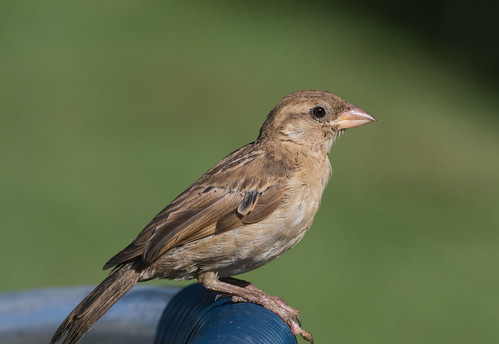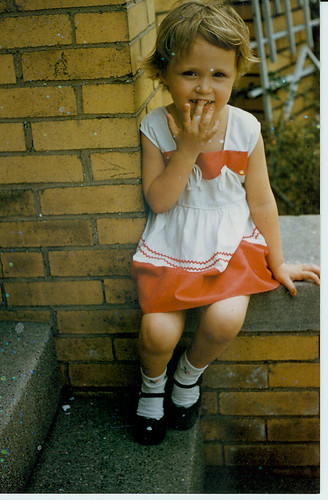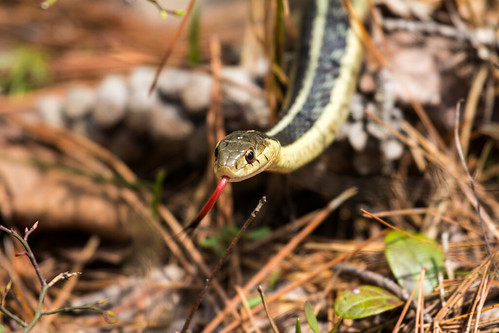
A few weeks ago, Bob Hinkle, my treasured mentor from my college days, whose class got me so interested in nature that my husband told his mom to buy me binoculars and a field guide for Christmas, wrote a lovely essay, which was inspired in turn by a lecture Bob had recently attended. Bob wrote:
Our host offered one question, and one question only. “The essence of the future of wild lands and wild birds and animals… comes down to one fundamental question. What were you doing when you were seven?”
Each person in that room no doubt flashed back to somewhere in their childhood and remembered what being seven was like. Few pondered school, or playgrounds, or dinners, or electronic toys or other material things. It was not shopping, or television, or theatres, or cities they remembered, it was a fundamental connection with the outdoors. We remembered parents and friends, and open fields and vacant lots covered with tall weeds and wildflowers. At seven there were an endless array of trees to climb, and hills to run and roll down, and dirt to dig in. Rainstorms meant puddles to splash in, and snowfall was for digging in and rolling up and eating, too. The wind felt fine against us, and we loved the feel of raindrops splashing on our tender fresh faces, and the water running down our cheeks and chins, and licking it off.
There were secret places in the outdoors, places where the grass was tall or the grapevines were thick, and there were soft earthen paths which lead us there. They were places outdoors where grown-ups never went, and those places were ours. No one worried that we were there. The outdoors was our friend. There were strange and mysterious bugs and butterflies, and creepy things under leaves and rocks. Every now and then someone would find a salamander or thousand-legged bug, and we’d take it home, for better or worse, to watch. Sometimes we’d find a rabbit and chase after it, and we learned that rabbits always run in a long circle, and that it would always come back to us after a time. Squirrels would always scamper to the far side of the tree when they saw us, but if we all stood still, and one of us went to the other side, the squirrel would creep around to our side so we could see it. There were birds in the trees we barely knew, bright orange and black and red ones and yellow too. If we asked, adults gave them certain names, but we recognized the birds when we saw them, and thrilled at their songs and flight, and made up names of our own. We got scolded if we came home with grass stains on our clothes, but no one was too fancy then, and all the kids had grass-stained jeans and shirtsleeves. It was what being a kid was all about.
Bob continued:
The point of our speaker’s challenge was this – what are the kids who are seven years old today doing? Is the mall the only form of walking they know, and is recreational shopping the most exciting thing they do? If all they know is the newest toy or music group or fashion thing, what do they really know? Where is the imagination, the learning, the mystery, the challenge, the fun that they will remember in 40 years? If all they know is fear of nature, fear of bugs and squirrels and birds and weather and the night, what will our environment become?
We develop a relationship with nature only by being in it for an extended time, not just for an hour this month and a week in the summer. Nature envelops you, a little at a time, by extended contact. You cannot experience it, really experience it, in tiny dribs and drabs here and there. Take a child outdoors. Give them a chance at a new and different future, so that when someone asks them, long after you’re gone, “What were you doing when you were seven?” they’ll remember, and smile. And there will still be a nature for their children to play in.

Bob’s essay got me reminiscing about when I was about seven, when my family was living in Northlake, a working-class, industrial suburb of Chicago. We had an arbor vitae hedge in front of the house. The needles were cruelly sharp, but by the time I was five, I'd learned how to carefully negotiate my way between the house and the first part of the hedge, and then could crouch down and hide from the entire world. Everyone else in my family was scared of the prickly branches—my dad wouldn’t even mow the lawn near it—so I was the only one brave enough to spend time close to it.

Well, I was the only brave one in my human family. House Sparrows hid in the hedge, too (except when I was too close). I loved sitting on the front stoop watching them fly in. The bushes seemed to magically swallow them up, which I knew was impossible, but the sparrows were too quick for me to see just how they entered the shrub and disappeared. Unlike me, they didn't care if people knew they were hiding there—they'd be cheeping away, telling one another about their adventures loud enough for anyone to hear. I didn't understand a word they were saying, but how I loved to eavesdrop and imagine being part of their friendly little conversation.

Sometimes little garter snakes crawled on the cool ground beneath the hedge. Their winding movements and active little forked tongues, tasting every millimeter of air before slithering into it, captivated me. I read somewhere that their eyelids were transparent and sealed shut; it seemed tragic to me that they didn't have real eyelids—ones like mine—so could never close their eyes to sleep or to shut out scary sights. But I supposed they must be used to it.
I didn’t like holding snakes—they were cool and rather hard and unyielding to the touch, and their unblinking stares unnerved me a bit. My white mice made much better pets. But even a year or two before I'd heard of St. Francis of Assisi, and long before I knew of Mr. Rogers, I knew these little snakes were my neighbors, deserving as much respect as my beloved backyard squirrels or pet mice.
We had a big old apple tree I loved to climb. I'd sit very still in the branches hoping a bird—any bird—would fly up and perch next to me as I watched caterpillars chewing on leaves and moving about in their deliberate way, undulating up and down instead of side-to-side as snakes did. I loved when one reach a fork in its path. It would lift up its front half and turn side to side so its shiny red space helmet head could look both ways before making the choice to turn left or right. What factors did it take into consideration? I wished I could get inside its head to understand what it could see and smell and how it made decisions like that. As an adult I learned that these were white-marked tussock moth caterpillars, and that the hairs on them can cause bad rashes on people's skin. I had let hundreds of them crawl on my fingers and hands over the years, but I had never once touched their backs or sides—I was scared of hurting them, and it seemed rude to touch them without permission anyway—so that was a lesson I did not learn the hard way.
Addison Creek meandered through town. We moved to Northlake in 1956, at the height of the polio epidemic when no one knew how it was transmitted, so our parents were terrified of the smelly, murky creek water. Nevertheless, my big brother went fishing in it a lot. When he headed out, my mother would warn him not to fall in, reminding him that he could catch polio, but as petrified as she was of the dread disease, it would never have occurred to her, or most of the other parents I knew, to keep him away from the creek. He only caught bullheads, and usually let them go because no way would my mother cook them.
By the time I was five, I was tagging along with Jimmy. I loved fishing—at least, the long, essential part of it, sitting on the creek bank thinking deep thoughts while watching his red and white bobber floating and bobbing with the ripples of the water. I could sit, quiet and still, for hours when Jimmy was fishing next to me.
But I hated the part at the start when the poor worm got put on the hook and the part, which didn’t happen very often, when a fish got caught on the hook. When Jimmy got a real rod and reel, he set up his old cane pole just for me, with 8 or 10 feet of fishing line tied to the pole and nothing but a bobber at the other end. Fishing with that was perfect.
My town had sprouted up as a bedroom community for the factory workers at Automatic Electric, a huge plant that manufactured telephones and telephone switching equipment worldwide. The plant was built on a large piece of land which included a stretch of Addison Creek. They maintained the grounds as mown lawn except a very tiny bit of the creek’s shoreline, but to a little urban girl, it looked like wilderness. I couldn't go there by myself until I was older, because that involved crossing Wolf Road, a busy street without a traffic light at the intersection with my street yet.
The parts of Addison Creek that ran through residential neighborhoods were a bit wilder if just as polluted. Where the creek paralleled a street, the houses were on the far side, leaving what seemed like primeval forest on the side with the creek. A path ran between the street and the creek along my favorite stretch. There were lots of tree roots making the rutted path challenging for bike-riding, but that made it even more exciting for some kids. I liked walking along the path, stepping off it when I heard bikes approach, pretending I was Laura, Wilderness Scout.
I first read the Felix Salten book, Bambi, in second or third grade, and loved the concept of the “thicket” where the little fawn was born. There were several of what I thought of as thickets along the creek. Looking back, I think they must have been some kind of grapevines draping down from larger shade trees. I loved the sense of privacy and aloneness that I felt in the one I thought of as my personal thicket. When leaves were thick in summer, I could sit down and read in there for hours and no one noticed me, even bikers passing by on the path less than two feet away.
My parents occasionally met up with aunts and uncles in one of the Chicago Forest Preserve picnic areas. When I didn’t have to hold one of my baby cousins, I would go off by myself on a trail into the woods. This felt even more like true wilderness.
Never once in my childhood was I away from traffic sounds or airplanes and jets taking off from nearby O'Hare Airport. I thought that kind of background noise was universal.
I didn’t know any adults who were birders or even nature aficionados, and knew of just two grown up jobs that involved nature. One was forest ranger, but my understanding when I was seven was that you had to be a man to be one. The other job was nun. I went to a Catholic school, and the convent, across the street from the school, was on a large, beautiful lot landscaped with flowers and trees. Most of the time when I walked past, I’d see a nun, deep in prayer or contemplation, walking in a lovely grove of trees or sitting in the shade near a statue of St. Francis of Assisi. That looked like the perfect job for me.
Looking back as an adult on that child, I understand how my commitment to nature was built on a solid foundation from an early age. My home was an abusive one where I never felt safe, but any time I retreated to my apple tree, the arbor vitae hedge, or my thicket, I felt safe. Nature, for me, was where you went to escape from humans to spend time with wild creatures, be they House Sparrows, squirrels, snakes, insects, or earthworms. Paying attention to those friendly little creatures gave me a visceral urge to protect them.
Most of the ornithologists, naturalists, and birders I know had childhoods more like Bob Hinkle’s, with at least some genuine wildness in their lives—most were exposed to field guides, adults who could answer some of their questions, and places to go where you could actually see a salamander and where the sounds of traffic and sirens and airplanes and jets didn't constantly fill the air. But what I had as a child was enough, and enough is as good as a feast.
It wasn't until I was in high school that I ever camped outdoors, thanks to some science field trips to the Porcupine Mountains in Michigan, Pere Marquette State Park in southern Illinois, and the Great Smoky Mountains National Park. None of the teachers along on those trips knew anything about birds. When I took college biology, we spent half the term looking at microscopic creatures and memorizing Latin names, and spent barely a week on mammals and birds at the very end of the term, never learning the proper English or Latin names for backyard squirrels, sparrows or even those tussock moth caterpillars.
Sometimes I wonder about all the cool birds I might have seen had I known how to look, and I've occasionally found myself grieving for the long years before my eyes were really open to birds. But then I remember the intense joy I felt in Bob Hinkle's classes, and then in ornithology classes, and on my solitary birding adventures once I learned how to know the birds. Those kids in my classes who already knew all the common critters took them for granted in a way I still cannot. Thanks to those long hours outdoors when I was seven, I already knew how to love tiny critters. When the floodgates finally opened and I was introduced to many more animals, big and small, my heart and soul swelled to encompass each and every one.





